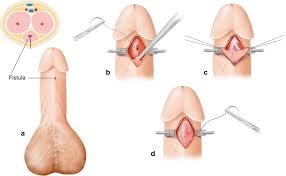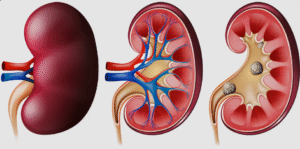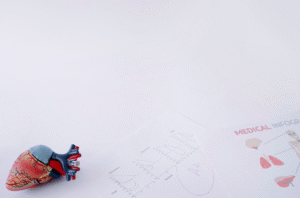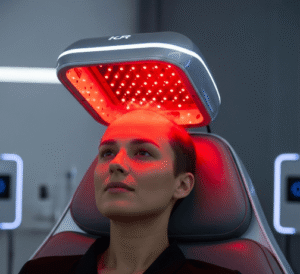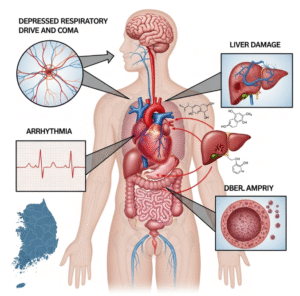Overview
Urethrocutaneous Fistula is an abnormal connection between the urethra and the skin, allowing urine to leak out through an unintended opening rather than through the urethral meatus. This condition most often arises as a complication after urethral or penile surgery, particularly hypospadias repair in children. It can cause discomfort, social embarrassment, and recurrent infections if not properly managed.
What is Urethrocutaneous Fistula
Urethrocutaneous Fistula is a pathological channel that forms between the urethra and the skin, resulting in the abnormal passage of urine through the skin, rather than the natural urethral opening. It is typically seen in males and most commonly follows surgical procedures on the penis, such as hypospadias repair. This complication can vary in size and complexity and may require surgical correction to restore normal urinary function.
Symptoms
- Leakage of urine through an opening in the penile or perineal skin
- Wetness or dampness in the undergarments
- Irritation or redness around the fistula site
- Recurrent urinary tract infections
- Pain during urination (dysuria)
- Difficulty directing urine flow or spraying
- Psychological or emotional distress, especially in children
Causes
The primary causes of urethrocutaneous fistula include:
- Surgical complications from procedures like hypospadias repair, urethroplasty, or circumcision
- Infection at the surgical site leading to wound breakdown
- Poor tissue healing due to tension, ischemia, or inadequate coverage
- Trauma to the penis or urethra
- Urethral stricture surgery complications
- Congenital malformations (rare)
Risk Factors
- Hypospadias repair, especially after complex or multiple procedures
- Inadequate postoperative care or wound infection
- Multiple previous urethral surgeries
- Tissue ischemia or necrosis after surgery
- Young age at surgery (common in pediatric patients)
- Presence of other genital anomalies
- Poor nutritional status or underlying chronic conditions
Complications
If left untreated or poorly managed, a urethrocutaneous fistula can lead to:
- Persistent urinary leakage
- Recurrent infections
- Skin irritation or ulceration
- Formation of multiple or larger fistulas
- Social or psychological distress, especially in school-aged children
- Need for repeated surgical interventions
- Urinary incontinence or stricture formation
Prevention
While not all cases can be prevented, the risk of fistula formation can be minimized by:
- Proper surgical technique with well-vascularized tissue coverage
- Meticulous postoperative care to prevent infection and wound breakdown
- Delayed surgery in cases with active infection or poor local tissue health
- Avoidance of excessive tension on the repair site
- Use of protective stents or catheters postoperatively when indicated
- Timely treatment of any signs of infection or dehiscence
Treatment Options in Korea
South Korea offers highly skilled pediatric and adult urologists who specialize in reconstructive urological procedures. Treatment for urethrocutaneous fistula typically includes:
- Initial assessment:
- Clinical examination and imaging studies to locate the fistula and assess its extent
- Cystoscopy may be used to visualize the urethra internally
- Conservative management (for small, early-stage fistulas):
- Observation in very small fistulas with minimal symptoms
- Catheterization to divert urine and promote spontaneous closure
- Surgical repair (mainstay treatment):
- Performed under general anesthesia
- Involves excision of the fistula tract and layered closure of the urethra and overlying tissues
- May require tissue grafts or flaps for larger or recurrent fistulas
- Postoperative care:
- Urinary catheter placement for 1–2 weeks to ensure healing
- Antibiotics to prevent infection
- Follow-up monitoring for recurrence or stricture
Korean medical centers utilize microsurgical precision and advanced tissue reconstruction techniques, resulting in high success rates and minimal complications for urethrocutaneous fistula repair.

